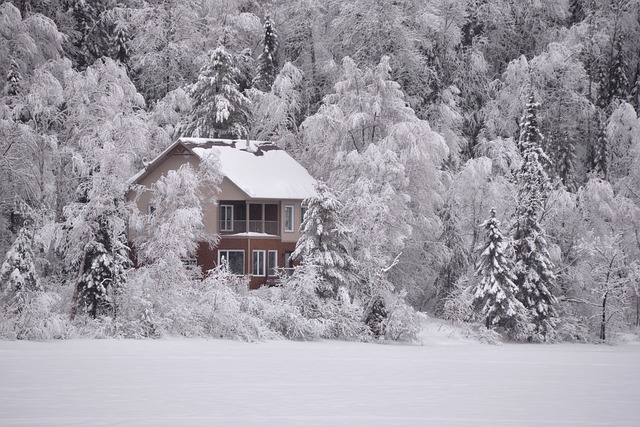Blog
Building a house in winter – the most important tips
Until recently, building a house in winter was not the best idea. However, the increasingly mild winters in Poland and modern materials mean that more and more people decide to work at this time of year. But does this mean that all construction activities can be carried out in winter? Do not necessarily! We present a short guide that will help you find the right time to build a house.
Table of contents
- Can you build a house in winter?
- What can be done during winter?
- Building a house in winter – advice on what work is better not to do
- Advantages of building a house in winter
Can you build a house in winter?
Although it is possible to build a house in winter, it requires careful planning and the use of specialized techniques and materials. Weather conditions, such as frost and snowfall, can significantly hinder or even prevent the performance of some works. The biggest challenge is the so-called wet work, such as bricklaying or concreting, which requires positive temperatures for the materials to set and harden properly.
Modern construction technologies in prefabricated construction in a wooden frame and the availability of specialized materials – allow for the assembly of buildings in winter due to the lack of wet work and the performance of most of the work in the production hall in controlled conditions. It is the only technology that, thanks to its specification, allows you to build a house in winter.
What can be done during winter?
All masonry and concrete works can be carried out even in winter, if the temperature is at least +5°C. In the case of frost-resistant mortars, the temperature range is increased even to -10°C.
However, due to the uncertain weather in winter, it is best to focus on internal work and those that are not directly exposed to the weather. Such activities include:
- Indoor installations: Works related to electrical, plumbing and sewage installations can be carried out regardless of external conditions, as long as the building is already in a closed shell state.
- Interior finishing: During this time, you can also carry out finishing works, such as painting, plastering, plastering, as well as installing tiles. However, it is important that the right temperature (at least +15°C) is maintained in the rooms and that adequate ventilation is provided so that moisture can be effectively removed.
- Installation of window and door joinery: This work can be done in winter, provided that the temperature does not fall below the level indicated by the manufacturer of the sealing materials.
It is worth adding that the construction of a prefabricated house gives more opportunities for work to be carried out in winter. This is due to the reduction of “wet work”, which largely depends on the weather.

Building a house in winter – advice on what work is better not to do
Although winter does not preclude construction, it is better to postpone some work to the warmer months. Avoid bricklaying, concreting, pouring floors and other wet work in sub-zero temperatures. Bonding materials under these conditions can be ineffective, leading to weakening of the structure. However, if you want to carry out this work in winter, choose the right materials designed for this type of conditions.
Works related to the insulation of the building and plastering of the façade are also particularly exposed to low temperatures, which can negatively affect the durability and aesthetics of the finish. Even specialized mortars may not provide adequate protection in extreme conditions.
In addition, roofing activities should also not be performed in winter. Low temperatures and slippery surfaces pose a serious threat to construction workers working at height. For this reason, if possible, such work should be postponed to spring.
Advantages of building a house in winter
Despite numerous challenges, building a house in winter has its advantages. In winter, there is less demand for construction services, which means that it is easier to find available and experienced professionals. In addition, the prices of materials are often lower than in the season, making the investment more profitable.
What’s more, the choice of construction in winter allows you to continue work without having to stop for the winter season. If a construction project is properly planned, it can speed up the overall time to complete the investment.
To sum up, building a house in winter is possible, but it requires good planning and preparation. By using the right technologies and materials, you can continue construction work even in adverse conditions, but it is important to understand which work can be done in winter and which is better postponed until the warmer months.
Read also: Can two houses be built on one plot?